|
If you read this blog regularly, you know I’m a can-do kind of gal. I choose to view obstacles as challenges and opportunities. I practice self-care. I watch my mindset. But the truth is that I MUST do those things. My natural tendency is to be pessimistic, low energy, depressive, and anxious. I fight against that actively. And let me tell you it can be exhausting. It can result in burnout and when that happens even self-care sounds too hard and like it’s just too much. So, friends, how do we keep ourselves from that point and what can we do when we get there. To avoid burnout, we need to protect our energy. That means we must: Take your vacation daysYes, I realize you are already at home. But being able to throw in a load of laundry in between meetings isn’t the same as taking a week to do whatever you want or need to do that isn’t work-related. Take those vacation days to recover and rejuvenate. Your work will benefit from it as much as you will. Get good sleep (quality and quantity)I love my Fitbit. Not only does it help me monitor my activity, but it monitors my rest. It gives my sleep quantity (hours and minutes) but also sleep quality, using a sleep score. It’s cool and helps me to contextualize my energy levels on a given day. Limit meetingsWe all know it, but science also proves that Zoom meetings drain your energy. I recommend at least one day per week without any meetings (for productivity) but also recommend that fundraisers do a “week on” and “week off” cycle for donor meetings. Use the “off” weeks to get visits for the upcoming “on” weeks, conduct follow-up on previous meetings, and rest and rejuvenate yourself. Do what must be done and walk awayRemember none of this is normal, but it’s likely to persist. We need to learn to pace ourselves. If you don’t feel good, ask yourself: “What MUST get done today?” Do that and walk away. Do other positive things for yourself to nurture your energy. If you do this with discernment, your motivation will return more quickly than if you just push through the negative feelings. I’m already burnout! How do I climb back out?If we are already in the burnout funk, how can we begin to climb out? And as someone who has battled depression and anxiety, I know you don’t want to hear about diet and exercise and meditation and yoga. Those things are fantastic and good advice and I’m an “on record” advocate for them, but you don’t want to do those things when you’re depressed. Like any good chicken/egg argument, how do we start to feel better so we feel well enough to do the things we know will make us feel better? Wallow (feel those feelings)If you’re depressed, admit it to yourself without judgement. If you are burnout, sit with that feeling and let is pass through you. Allow yourself to wallow a bit. Watch a series on Netflix that you’ve watched 5 times before. Buy that Ben and Jerry’s and savor it. Take an extra nap and don’t feel bad about it even one little bit. Extrovert woesI am a real extrovert. Extroverts get their energy from interactions with others. I’m finding that if I don’t get enough outside interaction, I get more and more down. Meetings help but they are on Zoom, which can drain energy (a real conundrum). I find messaging friends helps. Phone calls can help. Even doing something small like going to the grocery stores or picking up take-out (safely, of course) can help me get that human interaction that I thrive on. Get some spaceSeeing the same house and the same yard every day, hearing the same kids, the same frogs in the same creek gets old. One thing that helps me is to go for a long drive with an audio-book. I get some quiet and a change of scenery safely. Plus, gas is super cheap right now. We can also change up our personal space to be different. My husband fixed up an old table and made me a spot on our back patio to sip my morning tea and watch the garden. Take those vacation days (a reprise)Yes, I know I already listed this. But it’s so important and in the non-profit world, we feel tremendous pressure to perform. Getting some temporary relief from this pressure is essential, especially if we are burnt-out. Social media and news detoxThe state of the world is overwhelmingly. While it’s important to remain connected to friends and stay abreast of the news, it’s equally important to not let yourself slip into constant scrolling. I recently noticed myself doing this too much (mostly with Facebook). So, I removed the app from my phone, so I must go to my laptop if I want to check it, which puts some boundaries around my social media usage. Go for a short walkThis is the simplest way to get a change of scenery. Even just a 5-10-minute walk around the block can improve your mood. You can listen to music (another mood-booster), listen for the birds, or just talk with a friend. Watch your self-talkThis is so very important. If you’re feeling down and then you pile on negativity on top of that, you must stop. For instance, you feel terrible, so you don’t work out or you get behind at work, so you think, “Snap out of it. What the hell is wrong with you? You’re being lazy and going to get so far behind. How are you going to catch up?” This is so toxic, and we often do it unconsciously. I’ve found consciously practicing loving-kindness whenever I catch these thoughts is a healthy practice to counter this. Watch the thoughts and say “May I be filled with loving-kindness. May I be well. May I be peaceful and at ease.” Whatever you feel, feel it without judgement and with compassion. Do something small and make deals with yourselfThis is where we can really grow. Fundraisers love negotiation. Start to make deals with yourself. If I take a small walk, I can take a nap. If I do a gentle yoga practice for 10 minutes, I can watch another episode of my favorite show. Slowly, steadily, taking small healthy actions and “rewarding” yourself with something that sounds comforting right now will pay huge dividends. Over time, as your small healthy actions improve your mood and motivation, you’ll be able to do more of that positive self-care and suddenly you are in an upward cycle and not a downward spiral. Have you had any trouble with burn out during this crisis? What did you do to turn it around? Did any of these suggestions resonate with you? Let me know in the comments. Comments and questions are, as always, welcomed and encouraged! Cheers! Jessica PS - If you liked this post, you might also like these:
PPS - I hope you’ll continue the conversation by subscribing to Real Deal Fundraising. When you subscribe, you’ll get my FUNdraising Friday emails, which includes the best articles on fundraising, productivity and cool stuff every week. The whole thing is weekly curated awesomeness as well as freebies like webinars, instructional videos, and whatever else I can put together to be helpful to you! I don't know about you, but I feel busier than ever, despite the fact that I never leave home! With everyone being roughly two months into work-from-home, you probably have your office area set-up and if you have children, they are probably wrapping up formal schoolwork. Now, you’re finally able to turn your attention back to optimizing the situation. What can you do to make work-from-home work for you? Last week, I posted a collection of tips for managing your remote team. This week, I want to share what I’ve learned about managing myself and my time while being at home all day. Forget about the 9 to 5Everything you think you know about work – throw it out. You do not have to be sitting in front of your computer staring at your email from 9 to 5 to be a “good” employee. In fact, that mentality makes you less productive and more miserable. Have your goals for the day, week, month, and project and move towards them every day. Don’t focus on time. Focus on progress to goal. This is a crucial shift if you want to work from home without having a meltdown or having work take over your home life. Keep at least one day per week without meetingsIf I have meetings every single day of the week, I cannot do important projects that require thought-work or intensive writing. Meetings break up the day and pull your focus away from what you need to produce. They are necessary, especially in a remote arrangement, for facilitating teamwork and communication. But they must be kept in their place. I recommend one day every week without meetings to give you time to make progress on important projects. Also, I recommend doing donor meetings one week “on” and one week “off” when working from home. The “off” weeks give you time to recover as well as time to set up the next round of meetings. Which day will you choose to be your meeting-free day of the work week? No, you don’t have to dress upI see so many recommendations saying something like, “Get up and get dressed every day, as if you are going to work, to maintain a sense of normalcy.” If that works for you, more power to you. Cope however you can. But – to my mind – one of the benefits of working at home is being able to be comfortable and I’m not about to give that up just to trick myself with a false sense of normalcy. Most days I wear a tank top and yoga pants. When I have meetings, I throw on a cardigan, pull up my hair, and maybe put on some earrings. I relish my comfort and it makes me more productive. If getting dressed works for you, great! But, if you’d rather be cozy, I give you full permission to embrace that aspect of remote work. Eat the Frog“Eat the Frog!” means do the thing you are dreading having to do, FIRST. (If you had to eat a frog on a Tuesday, when would you do it? You’d do it first so you wouldn’t spend the whole day worrying about it.) Do it first and then it’s over with. If you have a tedious or boring or time-consuming task, just get it done. Rip off the Band-Aid and then it’s over and you’ve freed up valuable head-space for the other tasks in your list. BatchingGot a pile of thank you notes to write? Do them all in one two-hour period. It’s been proven that people who sit down to pay their bills only once or twice per month are happier with their finances than those that pay each individual bill as it comes in. Beyond the psychological benefits, it’s efficient. I also do it with laundry. I wash giant batches on the weekend and fold it all in one big push. Doing repetitive tasks all together is time-saving and more importantly, it saves MENTAL energy. You aren’t switching gears back and forth all the time. Make a list of 3-4 work tasks and 3-4 personal tasks that you could try batching. Pomodoro MethodMaybe there’s an “Eat the Frog” kind of task that you don’t like to do but it’s also recurring or repetitive? How to handle that? I like the Pomodoro Technique for this. This is a time management technique in which you decide how long you want to work on a task, set a timer, and then once you do that allotment of time, you get a break. For instance, maybe you have a tedious data clean-up project that you’ve been procrastinating on? Tell yourself you are going to work on it for 25 minutes and then take a 5-minute break. Take the break and then repeat at whatever intervals make sense for your deadline. (If the break is not long enough to motivate you or the time on the task isn’t enough to show real progress, tweak the times until you feel motivation and purpose.) I use this for housework: clean something, anything for 15 minutes and then I can stop. This technique helps you overcome the biggest hurdle: STARTING. I find the 15-minute requirement gets me off my booty and cleaning. Once I’m up, I generally will finish the task and work beyond the 15 minutes. Some days, I will quit after the allotted time. And that’s ok. I know tomorrow I’ll do it again. What work task could you use this technique on this week? Give it a try and let me know how it goes. Have a plan for your mealsFood can become frustrating when working from home. When you go to an office, you either have packed a lunch or you are going out to a restaurant to grab something. But at home, you will either must have something ready or you’ll end up cooking all day. Other options include being too hungry to work or eating junk food snacks which will catch up with you in the long run. And don’t get me started on how much it sucks to have a tight schedule of Zoom meetings and nothing ready to eat in between. I tend to do some protein shakes in the morning and cook big meals on Sundays and eat the leftovers for other meals during the week. Could you use your crockpot or insta-pot to have something ready to go while also producing leftover? Find a few recipes to try out next week. Self-careI’m a huge advocate for self-care, especially when you work-from-home. A Zen proverb says, “You should sit in meditation for 20 minutes a day. Unless you are very busy, then sit in meditation for an hour.” It’s true that you are more productive when you care for yourself well and do the things you know you should do to be your best self. I define discipline as keeping your promises to yourself. One of the benefits of working from your house is that if you need a meditation break or a yoga break or an exercise break, there’s no one to see you doing it. My office doubles as a home yoga studio and meditation space. Prioritize self-care and it will make you more productive. Sharpen your sawDo things that make you more motivated and productive at work. For me, researching, writing about, and teaching fundraising techniques keeps me at my best at my day job. Learn as much as you can about emerging digital opportunities and explore online learning options, which are exploding everywhere right now. Managing your own mindset and motivation level will pay huge dividends. Have you tried any of these techniques before – in or out of the office? What has worked for you that perhaps I didn’t cover here? Let me know in the comments below. Comments and questions are, as always, welcomed and encouraged! Cheers! Jessica PS - If you liked this post, you might also like these:
PPS - I hope you’ll continue the conversation by subscribing to Real Deal Fundraising. When you subscribe, you’ll get my FUNdraising Friday emails, which includes the best articles on fundraising, productivity and cool stuff every week. The whole thing is weekly curated awesomeness as well as freebies like webinars, instructional videos, and whatever else I can put together to be helpful to you! If you’re a regular reader of Real Deal Fundraising you know that I’ve been working from home for almost five years and fundraising for a school in California. (I live in Mississippi.) I rarely talk about the fact that I manage a team remotely too. I have an annual giving coordinator who is also the communications manager for the school and an advancement associate who helps us manage the data and process gifts. She’s half-time for now and lives here in Mississippi. In 5 years, I’ve learned a few things about how managing a remote team is different than managing an office full of folks. As offices adjust to work-from-home as a new reality, here are some suggestions for managing your newly remote team: TrustThe entire work-from-home model is all about trust. Perhaps that’s why WFH folks are 87% more likely to love their jobs than office dwellers, according to research by Leadership IQ. Your old worn-out 20th century leadership models that are based on command, control, activity metrics, pay-for-time, and micro-managing are not going to survive this crisis. Go ahead and make the change now and start trusting your people. The 20th century also was a time that believed in work-life separation, that world lingers with us in the high number of people who are freaked out when their kids interrupt meetings. The work-from-home model acknowledges that people are people and their life is fully integrated and influences their work. Acknowledgement of this increases respect between employer and employer. ResourcesLeveraging technology is so crucial right now. You new superior hardware, internet connections, communications software, database software, and perhaps other systems. Lobby to re-purpose budget resources for this purpose and you will endear yourself to your colleagues. Clear Goals and PlansWhen you aren’t with folks in person, you must have very clear goals and plans. Knowing when things must be done is crucial but the deadlines must be meaningful in order to inspire action. This isn’t about having more meetings on Zoom. It’s about having a crystal clear idea of what you need accomplished when you go into those meetings. Write out a plan or use a project management software to keep things on track. Focus on OutcomesDo not expect that your team will be sitting in front of their computers for exactly 8 hours every day. When working from home, work happens around kids, laundry, cooking, and many other things. I find that texting to check up on a project is the best way to reach out. If things are not urgent, send an email. I also use email to send detailed plans. But with my team, texting is the best medium for rapid communication. Focus on goals and milestones as you progress to goals. Don’t wring your hands over activity metrics and whether people are working “enough”. If goals are being achieved, they are working enough. Don’t feel you must find tasks to fill in the “gaps”. This is not the way to inspire loyalty. How you manage your employees during this crisis will determine whether they want to work for you long term. This seismic social change will have long-term consequences, including, I believe, more people wanting to work from home permanently. Why not view this as a opportunity to put some new management skills in your toolkit? Comments and questions are, as always, welcomed and encouraged! Cheers! PS - If you liked this post, you might also like these: PS - If you liked this post, you might also like these:
PPS - There's still time left to join my new course, All-Star Annual Giving. The course begins on Monday, May 18th! All-Star Annual Giving is a fully online 12-week course with 9 modules covering all areas of annual giving strategy and execution. If you want to roll into the semester with a fully-fledged plan to raise more money than you've ever raised before in your annual giving programs, you need to be in this course. The legendary fundraiser, Jerold “Jerry” Panas, passed away in July 2018. I feel so tremendously lucky that I got to hear him speak in 2014 at a statewide Association of Fundraising Professionals event here in Mississippi. He had a salt-of-the-earth, no-nonsense style that was very attractive and inspirational. His books are wonders of pith and restraint. My favorite is “Asking: a 59-Minute Guide to Everything Board Members, Volunteers, and Staff Must Know to Secure the Gift”. It’s a 108-page crash course in fundraising, easy to read, and highly quotable. As the fundraising world adjusts to the new reality of the pandemic, I asked myself what Jerry would be advising us to do right now. Wondering how he might approach it, I flipped through my much highlighted and underlined copy of "Asking" to find out. I felt I should remind all of us of these timeless truths from a master of our profession. Here are 8 amazing quotes about the practice of fundraising that I found highly relevant to our current situation: “What I’ve discovered in all my years of fundraising is that it almost doesn’t matter how you ask . . . what is important is that you ask. Just do it” (p. 11)I’ve already answered the question of “To Ask or Not to Ask?” in this post. I love that Jerry agrees with me. Fundraisers are not hired to raise money. We are hired to ask for money. So, we must find effective ways to do that and not let our discomfort or ego get in the way. “Keep in mind that men and women don’t want to give money away. They want to invest in great causes, in bold and exciting dreams.” (p. 12)Don’t Jerry’s quotes make you want to whoop and shout “Amen!”? Fundraisers can only go so far if there is not a bold and inspiring vision coming from the very top visionary leadership of the organization. Create something folks want to invest in. Right now, that may mean emphasizing how important your mission still is, despite coronavirus. Or you may need to switch to relief fundraising to help those you serve directly. “Integrity is the mightiest weapon in the fundraiser’s arsenal – more important than the campaign literature or anything that is said. Its power is explosive. Integrity alone is no assurance of getting the gift. But without it, you can’t even begin the journey.” (p. 20)I’ve written about integrity as an essential quality for a fundraiser last week and back in 2017. Find your deep connection to the mission of your organization or, by golly, go work somewhere else. That belief in mission will radiate realness from you and your donors will feel it and respond to it. “Work hard at putting people completely at ease and making them feel important.” (p. 48)This is the essence of quality cultivation conversation in one brief sentence. (Didn’t I tell you Jerry was pithy?) This advice can apply as easily to Zoom and telephone conversations as it applies to in-person visits. “People don’t care how much you know until the know how much you care.” 55Lead with care for people. Start with inquiring about the health and welfare of your donors and their family. Then move to expressing your care and concern for those your organization serves. If that caring is communicated effectively and with integrity, you are only millimeters away from a gift. “Lucky you. You are a fundraiser. Some shy away. Some are afraid. Some say they don’t like it. You know better. You are, in your own special way, helping to change a corner of the world.” (p. 77)We must remember the worthiness of fundraising as an endeavor if we are to survive and thrive in the non-profit world during this difficult time. Connect to that broader mission and be proud of it. I wrote a similar post here. “Giving up is the ultimate tragedy. Failure is not the crime – low aspirations are.” (p. 79)When I think about all the challenges that history has brought to those going before us (wars, disease, genocides, massive social change, etc.), I connect to the fact that we must endure. The first organized capital campaign (for the YMCA) happened during World War I and the Spanish Flu Pandemic. Harvard University embarked on their first endowment campaign in 1919, just after those two pivotal events. The American Red Cross had their first successful multi-million campaign during World War II. We can do this. “In all you do, act as if it’s impossible to fail.” (p. 88)Amen, Jerry! Our mindset largely determines how far we can go. What I see right now is a firmly 20th century mindset is dying, and organizations are being forced into a fully 21st century mindset. Organizations who have a scarcity mindset are already cutting revenue-generating staff at the mere anticipation of challenges. Institutions that have truly made the switch to a 21st century, abundance-oriented mindset will find a way to function in this new reality, as Jerry says, “as if it’s impossible to fail.” What's your take? Do you agree with Jerry or feel his lessons aren't applicable to the current moment? What's your favorite book of his? Comments and questions are, as always, welcomed and encouraged! Cheers, PS - If you liked this post, you might also like these: PS - If you liked this post, you might also like these:
PPS - There's only 12 Days left to join my new course, All-Star Annual Giving. Registration is open! All-Star Annual Giving is a fully online 12-week course with 9 modules covering all areas of annual giving strategy and execution. If you want to roll into the semester with a fully-fledged plan to raise more money than you've ever raised before in your annual giving programs, you need to be in this course. The 6 Essential Skills Every Fundraiser Needs for this PandemicBack in 2017, I wrote a post about The Eight Essential Skills for Success in Fundraising. Lately, I’ve been thinking about whether those same skills are the ones needed now, during this global pandemic. I made a list of the six most important ones for right now, without looking back on my old post. Here are the ones that I felt were most important for our moment in history: PatienceWith the market downturn, organizations that are desperate to close gifts on a timeline will inevitably lose out. Fundraiser’s that can be patient will be able to give donors the space and time they need to make the largest possible gift to the causes they care most about. Patience does also require that you have systems for following up later too. AdaptabilityFundraisers (and fundraising teams) that are stuck in a 20th century mindset and 20th century models of leadership will get left behind in the seismic cultural changes that this pandemic is causing. If you believe people working from home must be managed with a heavy hand and even heavier metrics, your turnover is going to be terrifying. If you are resistant to trying new things such as virtual events or Zoom donor meetings, you are doing your organization a great disservice. CompassionThose who do not lead with compassion and true concern and care for those they serve, their employees, and their donors will be quickly eliminating from donors’ list of philanthropic priorities. As the saying goes, troubles make us more of what we already are. If your institution was not truly putting people first, it will plainly obvious now and it will not be flattering. SincerityFor the love of all goodness in this world, be a real person. You know who they are at conferences, the fundraisers who would probably have been great used car salespeople. Those folks who show little to no vulnerability or realness in their approach. Those folks might be able to glad-hand their way to some gifts in the pre-pandemic world, but few savvy donors will have time for the shenanigans of those types now. ResilienceResiliency is always among my top qualities for a great fundraiser. One of my favorite interview questions is to ask folks about a time they failed. This is not to put them on the spot and expose a weakness but to see how they handled that failure. Did they get back up and try again? Did they learn from the setback? Only those who can fall off the bicycle, get back up and try again will succeed in this new reality. Confidence in the Worthiness of your Organization's MissionMore than any of these, if the fundraiser does not have a deeply rooted sense of the worthiness of the organization and its mission, they will not succeed. So many institutions are floundering and wondering whether they should even be fundraising right now. If your mission was vital before, it is vital now. Those you serve are counting on you. For comparison, my previous, pre-pandemic list of essential skills included:
It isn’t truly that much different. Sincerity and resilience appear on both lists. Integrity and manners are both deeply related to compassion in my opinion. Not to mention, adaptability is very much intertwined with curiosity. Writing, conversation and listening skills are the way that you communicate those other qualities to others. Though it seems counter-intuitive, I think tenacity is a match for patience because you must have good systems in place for following up with donors over several months and perhaps years. I caught up with an old fundraising buddy of mine yesterday, Markus Jones, who told me that one of his favorite interview questions is: “Tell me about your worst donor visit ever.” I’ve never asked that one, but I can see the appeal. Much like my question about failure, this question provides a platform for seeing how the fundraiser handles adversity. Do they do so with sincerity and integrity, or do they bend to the will of the donor (who might not be acting appropriately)? If the conversation went poorly, did the fundraiser learn from that and mitigate the situation afterward, showing resiliency? At all times, did the fundraiser move forward in confidence, knowing how to represent the mission of their institution, despite challenges? I hope we can all ask ourselves these questions and cultivate these skills and qualities in our work as we move into the days ahead. To that end, I’ll continue to provide information and resources here on Real Deal Fundraising so the professionally curious can get the ideas they need to succeed as fundraising professionals, despite the challenges we are facing. Did I overlook an essential pandemic fundraising skill? What would you add to this list? Comments and questions are, as always, welcomed and encouraged! Cheers, PS - If you liked this post, you might also like these:
PPS - Want to use your time isolating at home to become an All-Star fundraiser? Join me for my new course, All-Star Annual Giving. Registration is open! All-Star Annual Giving is a fully online 12-week course with 9 modules covering all areas of annual giving strategy and execution. If you want to roll into the semester with a fully-fledged plan to raise more money than you've ever raised before in your annual giving programs, you need to be in this course. After seeing an inspiring story shared by old friend and colleague, Jamie Raynor, about an alumna of Western Carolina University working as nurse during this pandemic, I had questions.You see, this incredible story is one of many uncovered by their Chatty Cat Phonathon callers during their recent “check-in” calls. I wanted to know how they took their phonathon remote, continuing to provide student employment during this crisis while also doing important work for the university. Here are my questions and Jamie’s answers: Tell me about how WCU is utilizing their phonathon callers during the pandemic. "Within the Western Carolina University Division of Advancement, we’re using our best callers to conduct ‘check-in’ calls with our alumni during this quarantine time. They are sharing the student experience and listening to the alumni experience during these short, scripted calls." What sort of stories have the callers uncovered and how is the university using those stories?"The callers are finding that the alumni are pleasantly surprised by the call, and many are eager to chat and share ideas, stories, and experiences. The callers flag records of alumni who are doing unique and/or front line COVID work and those are shared with me for story leads. I work with our Marketing and Communications colleagues on bringing the strongest of these story leads to them on a weekly basis. Completed alumni story profiles are used on our alumni website (alumni.wcu.edu), our social media channels, and our alumni e-newsletter. Most of the stories that our Chatty Cat callers hear are about our alumni who are teachers, nurses, public administrators, hospital administrators, researchers, and manufacturers (particularly in areas for parts for ventilators and PPE, personal protective equipment), and we’ve had some who are specialized in unique areas like funeral home owners and leaders in cruise line sanitation. The Chatty Cats have also spoken to several alumni who serve on our Board of Trustees, and those Trustees have provided very complimentary notes on their chats with these students. Overall these calls strengthen our Catamount community and allow for relationship building around a common struggle for us all. For those alumni who have said ‘how can we help’ the student callers reference one of our student emergency funds and guide the alumni to give.wcu.edu/relief for gifts." Now to get down in the weeds a bit: what technology are you using to empower the callers to work from home. How are they being trained and supervised via distance?What software are we currently using for the call center/remote calling?
Is there anything else you want to share about calling during this pandemic? "Yes, our development officers have each used this same ‘check-in’ call model to call through their portfolios, and most have followed these up with emails for next steps. Our front-line fundraisers have noted the great ability to learn more about their donors and prospects with these simple calls, and have been encouraged by the donor’s willingness to really connect over the phone. Most have been happy to have someone to talk to. Our Director of Donor Relations is mailing handwritten notes to hundreds of donors who give unrestricted gifts as an extra touch-point during this time as well. Our Alumni Engagement Office has partnered with Development Staff to create Alumni Zoom Socials, which we launched with our Triangle Alumni Club (Raleigh, Durham, and Chapel Hill area) last week. We have 16 additional Zoom social hours scheduled for the next 3 weeks to connect with our alumni." Is there anything else you want to share about fundraising during this challenging time?We have partnered with our Office of Community Service and Engagement to work with our local Jackson County non-profit organizations along with our Student Emergency Fund to raise money for COVID related needs on May 5, 2020 during #GivingTuesdayNow. We will stand up a webpage on the WCU website to share the WCU Foundation mission and student emergency fund giving link along with our non-profit partners’ mission and giving links, so our WCU alumni and friends can support our community in the area of their choice. Also, our development officers started with phone calls, emails, and handwritten notes to their donors for stewardship and prospects for cultivation but have now moved to scheduling Zoom meetings for moving the donor relationship forward towards solicitations and gift negotiations. About Jamie Raynor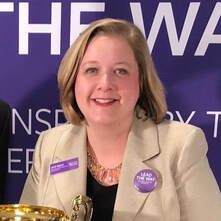 As a higher education professional for over 17 years, Jamie Raynor gained early experience in academic affairs for several years before turning her focus and her profession to development and advancement initiatives. In her temporary role, she currently serves as the interim vice chancellor for WCU's Division of Advancement for Advancement Services, Alumni Engagement, and Development staff, also serving on the Chancellor's Executive Council. Her permanent role as Assistant Vice Chancellor includes the supervision of major, planned, and annual giving professionals in the development office. She also manages a portfolio of corporations, foundations, and individuals to secure major and planned gifts. Have you been utilizing the unique talents of your phonathon callers during this crisis? Why or why not? Did this case study make you feel any differently about trying it out? If social distancing measures persist into the Fall semester, how do you plan to handle your phonathon? Let me know down in the comments. And if you liked this content, please subscribe to Real Deal Fundraising. You'll get my FUNdraising Friday emails, which are jam-packed with interesting, useful, and funny content to keep you sharp and motivated! Cheers, PS - If you liked this article, you might like:
PPS - Want to use your time isolating at home to become an All-Star fundraiser? Join me for my new course, All-Star Annual Giving. Registration just opened! All-Star Annual Giving is a fully online 12-week course with 9 modules covering all areas of annual giving strategy and execution. If you want to roll into the semester with a fully fledged plan to raise more money than you've ever raised before in your annual giving programs, you need to be in this course. How you on-board any employee determines how welcome they feel, how quickly they get up to speed, and what assumptions they make about your organization for a long time.Have you ever gotten a new job and when you asked what you should do the first day, they said, “Make sure you drop by HR and do your paperwork”? The lack of even basic levels of training and orientation at some fundraising shops has left me absolutely flabbergasted as to how those places form even marginally effective teams or how they retain any employees. Preventing turnover starts at the very beginning of the employment relationship. When I was in the interview process to serve as Vice President for Starr King School for the Ministry (the position I currently hold as of the writing of this post), I read the phenomenal book The First 90 Days: Proven Strategies for Getting Up to Speed Faster and Smarter, by Michael D. Watkins. It helped me to craft my own on-boarding process as a new institutional leader. I worked with my new president to create a custom on-boarding process that gave me space in the first three months to learn the institution and craft a plan for the best chance of success. I met not only with key donors, but also with board members, former employees, communications consultants, and faculty members. I learned the values of the organization as well as the political mine fields to avoid. I found out what had and had not been tried in the past. Basically, it was priceless reconnaissance that played a huge role in my future success in fundraising for the school. In The First 90 Days, Watkins emphasizes that the first 90 days is a pivotal time which can catapult a new employee into a vicious cycle of making early mistakes and never quite recovering from them OR those same 90 days can be the on-ramp of a virtuous cycle with early wins that increase confidence in both the new employee and the organization. That’s exactly what it did for me. A similar process happened when I was hired at The University of Southern Mississippi. Five development staff were hired at the same time and our manager put us through a 3-week training program where we met with deans, directors, and prominent faculty to learn all the fantastic funding-worthy projects at Southern Miss. We also sat for presentations about planned giving and other more technical topics. Not only did we all bond together as a phenomenal team, but every single person went on to great success within their roles. The Three AsAs I see it, the three elements that every exceptional on-boarding process possesses are the 3 As: Alignment, Alliances, and Acceleration. (I’m simplifying and slightly modifying Watkins here.) *Everything I am going to say in this post can be modified for our new distancing reality with coronavirus. Just because you can’t take a new employee out to lunch, doesn’t mean you can’t have a BYOB(L) – Bring Your Own Bag (Lunch) Zoom meeting to get to know them personally. AlignmentGetting your new folks into alignment means that you have a pre-determined process to get to know your employee and how that employee comes to know your organization. You must have formal sessions that communicate the organizational culture, including expectations and norms. Does everyone roll in anytime before 9:30AM? Or is this a shop where everyone is expected to be there by 8AM sharp? What are the expectations around dress? Around meetings and promptness? How flexible is the organization about working from home and handling things like illness and children? This needs to go beyond what Human Resources would tell someone. Your new hire needs to know how things work, not how the employee handbook says they should work. Another often overlooked part of getting to know the organization is communicating organizational politics. Most people feel gossipy putting this into words but telling your new hire the truth about these things is a gift to them. Knowing that there’s one dean on campus that a true pain-in-the-ass but they are highly regarded by the president and all the faculty could be a career saver for a new person. Why wait for them to “step-in-it” to learn what you probably already know? Think through what you wish you had known when you started and be very candid and frank about the political climate of your organization. Alignment is not a one-way process. The flipside is that you must also get to know your employee during this on-boarding period. During the interview process, you are learning about them but not getting to know them. In the interview, you are judging. Now, your only goal is to learn about them so you can support them as their leader and manager. You must know them to help them succeed. Take them to lunch and tell them they cannot talk about work. Have weekly check-ins for a while to uncover any issues with the training and early assignments. The time invested in meeting with them will pay dividends when you jointly decide together (at some point during the first three months) what success looks like. You will set goals together. These goals will have grown out of their training and understanding of the organization and your understanding of their strengths and skills. AlliancesA key component of a virtuous cycle on-boarding program is it includes pre-set meetings with important partners within your office and throughout your organization (perhaps key vendors too). The hiring manager will have set all of these up before the new hire arrives and this introduces them to all the relevant colleagues and partners. These meetings end up being the platform where a ton of information gets downloaded but also every partner the newbie meets with becomes invested in their success. This is the secret. If the new hire calls one of these colleagues for help early in their tenure, they are likely to deliver that assistance. Another thing that can promote alliances within your immediate team is to have strengths assessments and personality tests done on all members of the team. When a new person is hired, the team can discuss how their personalities complement each other and align with the new team member. This cements the team together. AccelerationSomewhere you probably have an employee handbook that explains how to submit expenses reports and how to take days off. You need to level up from that if you want your new hires to have mind-blowing success fast. Information accelerates success! Your new employees deserve a binder full of process documentation that shows them how to make a data request, how to enter a proposal into the database, a list of all standing meetings they are expected to be involved with, and a yearly calendar of major work events and tasks for the entire year. (Of course, customize this for the position and your office. My list was just an example of the sort of things you would put in this guide.) If you have never read the E-Myth, I suggest you read my post about process documentation here and pick up that book, along with The First 90 Days. Technical training is also crucial to assess. Many entry level fundraisers do not have the specific training they need to truly excel in their new roles. For example, while broadly our industry views annual giving as an entry-point into fundraising, it is one of the more technical and difficult areas of fundraising to get right. Invest in training for them. Big conferences full of new ideas and innovations may sound exciting, but as a new person without the fundamentals on board, I guarantee all those new ideas will feel overwhelming quickly. The need for an in-depth course into the fundamentals of the art and science of fundraising is why I’m fast-tracking my plans to get my All-Star Annual Giving course up and running. For far less than the cost of an average in-person conference ($597), you can get your new folks trained in the science (data, analytics) and art (writing, strategy) of fundraising. It will take no time on your part, your new hire will be off to the races no matter what area of annual giving they work in, and you'll be an All-Star manager with a goal-busting team. This comprehensive curriculum is grounded in evidence-based fundraising and designed and taught by me, Jessica Cloud. You can check out my bio here as well as testimonials here. All-Star Annual Giving is a fully online 12-week course with 9 modules covering all areas of annual giving strategy and execution. You can see a draft outline of the course here. Registration opens in the next couple of weeks. The course will open in May, Sign up today to get updates. Enrollment in the course will include lifetime access to the course modules, which include dozens of lessons. Each lesson will be presented in written and audio formats, so you can read at your desk or on your phone. You can also listen to audio lessons on your commute. Every lesson will be enriched with videos (where appropriate), downloadable planning sheets, templates and examples. Enrollment will also include access to a Facebook group with your cohort (and later alumni of the program) for support and on-going questions and advice. Finally, your new hire will be accelerated to success by you specifically telling them that you support them and letting them know where they need to go with their questions. If your employees feel comfortable letting you know that they don’t understand something or don’t know how they can achieve their goals, you’ve won! Because that level of trust between a manager and an employee is what will enable you to jointly find solutions that work. What does your on-boarding program look like? How has that changed with isolating for coronavirus? Have you invested in any online training for your new hires? Let me know in the comments. And of course, questions are, as always, encouraged! Cheers, Jessica PS – The photo for this is my daughter boarding for a big train ride to Chicago to see Hamilton! Clearly, I’m missing travel quite a bit. Also, if you liked this post, you might also like these:
PPS – No funds to invest in online training? For every 10 folks that sign up for my All-Star Annual Giving course, I’ll be gifting a full scholarship for course access to someone who would otherwise not be able to afford the course. You can apply here. Check out the entire course outline and other information about All-Star Annual Giving today too. Brace yourself. I'm going to use a buzz word. Maybe that’s two words. Anyway. Here’s a definition of self-care that I love from Psych Central: “Self-care is any activity that we do deliberately in order to take care of our mental, emotional, and physical health. Although it’s a simple concept in theory, it’s something we very often overlook. Good self-care is key to improved mood and reduced anxiety. It’s also key to a good relationship with oneself and others.” Deliberately. You have to do it deliberately. Plan for it. Schedule it. Make it part of your routines. Also note, that it doesn’t just help you. It helps others because it makes us better partners and collaborators. You’ll be less stressed, healthier, more patient, and probably more kind. Taking good care of ourselves now is perhaps the most important thing we can do . It will prevent burn out and boredom and restlessness that will help us stay home and flatten that curve. But, I would argue that for non-profit pros, it's absolutely essential. Here's why: Non-Profit Professionals and Self-CareSurely you know, that non-profit and fundraising roles can be extremely stressful and that was true long before COVID-19. The Chronicle of Philanthropy ran an article in August of 2019 about new research showing that 30% of fundraisers plan to leave the field entirely in the next two years! There are many reasons for this startling statistics, here are a couple:
I can guarantee that the "tremendous pressure to succeed" will only increase as we move through the coronavirus crisis and into the recovery phase. What does all this have to do with self care? You might ask.Well, in order to be the absolutely All-Star Fundraiser I know you can be, you have to be your best self. You can’t succumb to nonprofit burnout. The industry needs folks like you to stay in fundraising. With 3 out of 10 fundraisers planning to depart the entire sector (before this crisis), nonprofits will need YOUR unique skills. So, I’m going to encourage you to take care of you. Shouldn't we be lobbying for a better budget, higher salaries, more cooperative leadership, and more reasonable goals? bsolutely! In order to do that, you have to be in top form. You will need even more resilience to raise amazing amounts of money while also changing an industry. I’m going to challenge you just to go just a bit further in taking excellent care of yourself. Self-care: it isn't (all) about crystals and bubble baths!Self-care has this modern connotation of it being something over-worked wine mommies do. They're looking for a "Calgon-Take-Me-Away" bubble bath. (I just totally dated myself with that commercial reference, didn't I?) While those sorts of indulgences and treats do have a place in a well-rounded self-care regimen, they are not the core of a self-care practice. It is not our grand gestures that keep us healthy in body, mind, and spirit, but the small things we do daily. You can quote me on that one. You need to identify small, sustaining daily habits that can be done on 80-90% of days to help you be in the best form for yourself and others. To help you build that practice, I've created the Self Care Mind Map and the 90 Day Habit Tracker. (To download both files in PDF format, as well as view my entire Self-Care for Non-Profit Pros webinar, click here.) The process starts with the Self-Care Mind Map. Self-Care Mind Map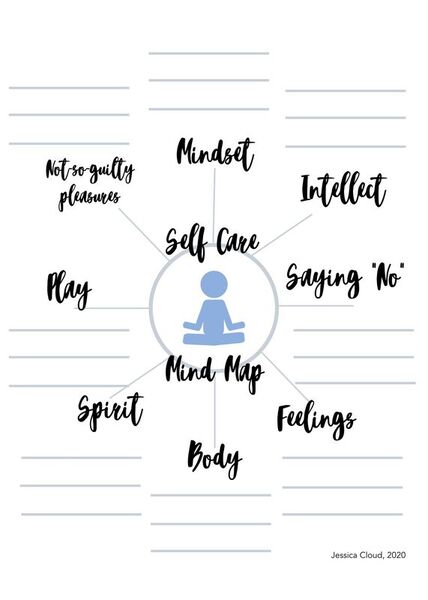 The Self-Care Mind Map is divided into eight areas of our life and I want you to stretch yourself and think of three things you could do in each category that would improve your quality of life. You are not committing to doing any of these things at this point. Just write whatever comes to mind. Mindset You need to fill your brain with a positive can-do attitude and your mind needs to just rest and be clear sometimes. For my Mind Map, I put that I could listen to positive podcasts, meditate for at least five minutes per day, or take periodic detox breaks from social media. Yours might include affirmations, visualization, reading self-help books, or audiobooks. There are so many options to build a healthy, resilient mindset. Intellect Generate some ideas about how you can feed your mind. For example, I love documentaries, about the British Royal Family and World War II (bonus if it’s about both)! I also like to read on many different topics and I like learning foreign languages using the Duolingo app. Saying “No” It might seem like we are having to give up too much these days. But think about what causes you unnecessary stress or takes away too much time. For me, I don’t consume news in excess and I’m working really hard to stop scrolling on my phone in the mornings. Feelings If we don’t acknowledge and process our feelings, they either appear in the body as illness or they manifest in destruction behaviors (like addiction) and interpersonal patterns (codependency). I wrote on my Mind Map that could set firm boundaries about my needs, practice focusing on what I can control, and I free-write in my journal three quick pages most mornings. (Morning pages is a practice from The Artist’s Way by Julie Cameron and I highly recommend this book for any creative person.) Yours may be committing to attend 12-step meetings (yes, they have lots of these online and via phone these days), visiting a counselor (also available online), or writing a letter to express a long-held grudge (even if you don't send it). What, if you were deeply honest with yourself, do you need? Body There are endless options for this category: you could floss more regularly, lift weights, eat more vegetables, go for a daily walk, get 8 hours of sleep most nights, the list goes on and on. The challenge here is to narrow it down to what you most need and what will truly provide you with the most benefit. Oh yeah! And it has to be something that you can and will do! My two that make me feel amazing are daily yoga practice of at least 15 minutes and getting 10,000-15,000 steps on my Fitbit daily. Spirit Even if you are a hard-core atheist, you still need to attend to your spiritual side (even though the word “spirit” might make you bristle a little). Hear me out: Even if you don’t go to church, do you have a community, a strong friend group that you can rely on. Do you sing daily? Singing is a powerful kind of psychological medicine. I also like reading poetry (and writing it too). What other things can you think of to nourish your sense of wonder and awe at this whole being human thing? Play Play has a few particular characteristics. First, play is pleasurable. Sounds like “duh!” but things in this category should be fun. Second, we enter into play voluntarily and most often it is self-chosen and self-directed. So, no putting things you think you “should” do in this category. Play makes us feel like we can do it all day. There’s a feeling of time not moving when you play. My kids help me play. These days, we love having family game nights and family movie nights. Those are precious moments, yes. But I also enjoy them because they are fun for me. Not-so-guilty pleasures Now, we are really getting into the nitty-gritty. This is where you can let loose a bit. What are three things you might call “guilty pleasures”, the things you are a little embarrassed to admit to someone you respect that you enjoy. I love a good bath. But, that’s become like the stereotype of the harried mother trying to do self-care. Still, it’s a happy place for me. I also love showtunes! And I have an entire collection of vinyl records from Broadway and movie musicals because no one else wanted to buy them! I also love really giant (like Alice in Wonderland-style) ridiculous cups of hot tea. This list will be your go-to when you are ready to indulge. 90 Day Habit TrackerOk, now that you’ve filled out your entire mind map, pick 3-5 that you know would improve your quality of life if you did them every day (or most days). If you do this with 80-90% adherence, I’m telling you it will completely change your life. Feel free to throw out a habit if it doesn’t work after a couple of weeks or a month, then replace it with something else. You can also change the duration that you do one practice. For instance, if you started off with 20 minutes of meditation and you find you cannot fit that in, drop the goal to only 5 minutes a day. Have fun figuring out what makes you feel the best. Back in 2017, I set myself a challenge like this. I wanted to do #yogaeverydamnday and get 10,000 steps every day for 30 days. At the end of that month, my mind was sharp and clear, I had lost a bit of weight without much strenuous effort (and while eating pasta and cannoli when traveling), and when I woke up in the morning I didn’t creak with aches and pains. It was nothing short of remarkable. When I described the amazing benefits I gleaned from this experiment to my aunt, she stared at me seriously and asked, “Well, why the hell did you stop?” I did not have any good reason. At that point I realized I needed to build this into my life in a sustainable way. There will be days that I twist my ankle and can’t achieve the 10,000 steps. There will be days that I'm too busy with meetings for yoga. That’s ok, too. But working toward 80-90% adherence to healthy habits bring tremendous results. ConclusionAlso, please remember to find beauty and practice gratitude. I have been snapping pictures of flowers every day, because I’m so genuinely grateful that I can get outside and walk. The weather has been beautiful here (whereas my brother and his family are stuck in late season snow in Colorado) and I have other friends who are stuck inside their homes for the foreseeable future. So, the best thing we can do for ourselves and others right now is to look inward and tend to ourselves like one would tend a garden, cultivating compassion for self and others. The result will be grace. Grace for ourselves, for our families, our kids, our elders, the healthcare workers, the UPS drivers, our neighbors, everyone we interact with. And please tip your cashiers and delivery drivers very generously, as you are able. To get through all of this, we will need to take this extra time at home with our family to cultivate our best habits of self-care, which will fortify our body, mind, and spirit. These practices will give us the resilience we need to get through this crisis successfully and come out the other side of stronger in many ways. If you already have a self-care practice, what does that look like for you? If you used the Self-Care Mind Map, what kinds of things did you come up with to try? Did any of them surprise you? In a couple of weeks, I want to know what benefits you've been able to garner from making some of those things habits? Please let me know in the comments below. And of course, if any of this stirred up questions, send me your question in the comments and I'll address it. Cheers, Jessica Cloud
PS – If you liked this post, you might also like these:
PPS - If you found this article helpful, please comment and let me know. Also subscribe to Real Deal Fundraising so you don't miss a post! I feature a new blog post every Thursday and when you subscribe you’ll start to receive my FUNdraising Friday emails where I bring you curated information and super cool freebies exclusively for my subscribers! Having been kicked out of our fundraising comfort zones so suddenly and so thoroughly by COVID-19, what do we do now?You’re maybe just getting your home office set up in a way that doesn’t drive you crazy and maybe your kids are finally settling into their new reality of homeschooling. Now, how are we supposed to raise money in this new remote world? To solicit or not to solicit?That is the first question. I’m seeing a huge divide out there on blogs, Twitter, LinkedIn, etc. One camp says “Engage only. Don’t solicit.” The other camp says, “Keep soliciting.” Don’t assume. Don’t project.Let me probe the semantics with you for a moment. In your mind, change the word "solicit" to “presenting the needs of your institution” or “ask” for short. Now, doesn’t that feel a little bit better? See, the problem with this debate is that we are making decisions from a place of fundraiser discomfort. We are reeling and trying to adjust and projecting our own uncertainty onto our donors. We shouldn't assume that they are uncomfortable or don’t want to give. We should not rob them of the opportunity to help during this crisis because we are uncomfortable. So, where exactly do I fall in this debate?Engage first. Present the needs of the institution. Ask when appropriate. This is the same advice I would always give. Lead with relationship and deeply care for your donors as people. Connect with them over the mission and values of your institution. Communicate clearly the priorities of your organization right now. (Hint: the first should be the health, safety, and welfare of those your institution serves and the employees of the organization. Everything else follows that.) If you are at a point in the relationship where an ask seems correct and natural, ask. Dangerous advice for small organizationsThe advice to completely put all asking (and usually they use the word “soliciting” to make other fundraisers feel sleazy and uncomfortable) is dangerous, especially for small organizations. Check the work history of the person giving any advice to cease solicitation and if you work for an organization much smaller and more fragile than they have, feel free to keep scrolling. Large institutions with big endowments can weather this storm without asking. Small organizations won’t be able to do that. Donors want to help in a crisisThe second reason that stopping all asks is bad advice is that donors often actually WANT to give during a crisis. I’ve been a phonathon caller after 9/11, ran a phonathon during the economic downturn of 2008, and did relief fundraising after an EF-4 tornado hit my personal home and the campus of the university I worked for. Donors, when they are able, rush in after a crisis and support the organizations that mean the most to them. They want to buoy you up right now. Lead with care for peopleYes, you want to value long-term relationship over short-term revenue. That’s true. Patience follows naturally, when you value your donors as people. Donors may need to wait several months for the stock market to rebound. Others may not have head-space to talk right now, especially if loved ones are ill or vulnerable. All of that is okay. Lead with care for people, but don’t let your fear and discomfort lead. You also have a fiduciary responsibility to your organization, especially if your institution is small and needs the revenue. Again, it's pretty simple: lead with care for people. Present the priorities and needs of your organization. Ask if appropriate to the life-cycle of that donor relationship. Ok, now what?If you’ve decided to continue doing some fundraising, how exactly are we supposed to execute our plans? Here are 8 ideas that I’ve been trying out (or planning for) at my day job: Relief FundsEven if your institution is one of those that has a large endowment and can get by without immediate contributions, are there immediate relief needs for those you serve and/or your employees? Many universities are starting emergency relief funds for students who cannot get home right now and perhaps have lost their sources of income. My institution will start relief campaigning next week. We will do it almost all digitally, with a letter later in the month (done through a mail house that is still in operation). Giving Tuesday (COVID-19 edition)Have you heard that there will be an extra Giving Tuesday on 5/5/20 to help donors and organizations respond to the COVID-19 crisis? Now is the time to be planning how your organization can participate. Here’s the info on that plan. Facebook LivesFacebook lives are a fantastic way to connect with folks. The president of my institution (a Unitarian Universalist and multireligious theological school) went live at the same time every day last week to talk with our graduates and friends. She discussed hope and resilience, offered prayers and support, and clearly presented the priorities of the school right now (the health, safety, and welfare of those your institution serves and the employees of the organization, followed by her long-range plans and vision). Then, each day she did very soft asks for recruitment and fundraising (alternating days). (To be fair, we are better positioned to continue recruitment than most higher education institutions because we’ve been doing some form of distance learning since 2001.) The video replays of the lives that we have boosted are doing very well and it is driving folks to our virtual open houses and our giving landing pages. Virtual Event Landing PagesThe school I work for relies on “house party” style events for donor acquisition and unrestricted support. When we had to cancel one of those in mid-March, we made the event virtual using Zoom and created a landing page specific for those prospects, with pictures, language, and a student profile video we already had from previous years. We also created a specific giving page associated with and linked to the landing page. While the actual virtual event had only around 12 folks, those folks shared it with the rest of their congregation, and we had over 60 visits to the landing page. It’s small but it’s a place to start and didn’t require much time or effort. Boost the $h*t out of everythingIf you’re a fundraiser, you’re not traveling right now. That means you have some money in your budget to boost EVERYTHING you do digitally. One or two saved plane tickets can pay for some tremendous boosts of your Facebook live replays and other digital promotions. You can also buy ads that push folks to your relief giving pages. Zoom Meetings with Major DonorsZoom provides a platform that is almost as good as being there. Offer your donors Zoom or phone as options. If they aren’t comfortable with Zoom, phone is good. I’ve had two discovery visits and a dozen or more significant other major donor visits in the last two weeks without leaving my house. Here’s how most of these meetings have gone:
(Oh, and BTW, I secured millions of dollars from these visits because I didn't stop asking. Most are verbal commitments that will be finalized later but I secured hundreds of thousands of dollars that will come in by the end of this fiscal year.) Presidential small group ZoomsFor the next steps with my discovery visits and for several of my donors that haven’t had a significant amount of contact lately, I’m putting together a small group Zoom session with our president and 4-5 donors. This concept was uniformly popular among the donors and my president is very excited to connect in this way. Digital Contingencies for Live EventsOur largest fundraising and acquisition event of the year takes place in June and we are worried that it will not happen in person. It is a highly structured fundraising breakfast event. We are developing our plans to make this event digital as a BYOB: Bring Your Own Breakfast on Zoom. We may use the webinar feature in Zoom to deliver this more seamlessly. I will post more as plans become clearer and we know about results. ConclusionThis time is a tremendous opportunity to pivot and innovate in ways that will stretch our creativity. We can absolutely do this together!
What techniques are you utilizing to connect with donors? Are you raising funds for relief? What have you tried and what are you planning to try? Where do you fall on the debate of “to solicit or not to solicit?” Let me know in the comments. Comments and questions are, as always, welcomed and encouraged! Cheers, Jessica Cloud PS – If you liked this post, you might also like these:
PPS - If you found this article helpful, please comment and let me know. Also subscribe to Real Deal Fundraising so you don't miss a post! You’ll start to receive my FUNdraising Friday emails where I bring you curated information and super cool freebies exclusively for my subscribers! We are all scrambling. The situation with COVID-19 changes day-by-day and hour-by-hour. Hopefully by now, nonprofits have taken steps to allow all but absolutely essential personnel to work from home. Fundraising, while essential, is a function that can be done from a home office. The big question is: How can we keep our donors connected to our organizations in this unstable environment? When it became clear that I would not be allowed to travel anymore for work, I fell back on a maxim I heard somewhere early in my fundraising career. It rhymes so that’s convenient and an aid to memory. Near Dear Clear In any circumstances where rapid change is taking place, we must take great pains to keep our donors near, dear, and clear. What does that mean as a guide to practical action and how can we all undertake those functions while protecting ourselves and our donors from coronavirus? Let’s take each part of the maxim in turn: Near: Be in Contact!You will need to leverage all forms of media at various levels to keep in touch with your donors. First, for your major donors, set up as many one-on-one Zoom meetings as you can reasonably handle each week to check in with them and make sure their families are doing okay right now. Take it week-by-week so it will not be overwhelming but striving for 6-8 substantial phone calls or Zoom meetings with major donors per fundraiser seems appropriate. Secondly, utilize digital means of connection as much as possible. The president of the institution I work for is doing a series of Facebook live discussions this week at the same time every day. Send email updates or text your constituents. Don’t bombard them with info but if you have meaningful information to report, do so on all available channels. If you have Facebook groups, use those to communicate too. Encourage your supporters to share info so it gets in more Newsfeeds and inboxes. Third, for your mid-level donors or major donors that you cannot check in with immediately, don’t forget about good old mail and phone. You can do a quick check-in calling campaign one day per week and write some hand-written notes. (Of course, please be careful with your mail protocols for hygiene. Use self-adhesive stamps and tape if possible. Barring that, seal or affix with a sponge. And wash your hands well before handling mail to be sent out.) Dear: Express GratitudeYour messaging needs to let donors know that you care about them as people. It’s not just about expressing our usual level of stewardship and gratitude. This is thanking them for believing enough in your organization’s mission to hang in there in this time of great change and uncertainty. Express gratitude not only as a staff member but express gratitude on behalf of those your organization serves. Let them know that because of them, your mission continues and will continue after COVID-19. Clear: Have Clarity, Openness, and HonestyMake sure your organization is crystal clear on its priorities. The first of which should be the health, safety, and welfare of those they serve and those who work for the institution. Repeat this often to your constituents.
However, do not shy away from honestly telling donors how this crisis is affecting your organizational needs and its finances. Your major donors and board members especially deserve the candid talk about what is needed, what might be needed, and why. Did you find the framework of near, dear and clear helpful in thinking about how you are keeping donors connected these days? What other strategies have you tried in the last couple of weeks that keep donors near, dear, and clear? Tell me below in the comments! Again, I hope this was helpful to you. If it was, please leave me a comment below. Also, if you found this very helpful, I hope you’ll subscribe. By doing so, you’ll get my FUNdraising Friday emails every Friday with pick-me-ups, helpful articles, and cool freebies. Humor and a commitment to continual learning will no-doubt help us all through this crisis. Take care and be well, Jessica PS - If you are feeling stressed and anxious and burnt out due to coronavirus, you're not alone. Because so many are facing unprecedented challenges and pressure right now, I'm hosting a free webinar on the topic of Self Care for Non-Profit Professionals. It will take place April 1st. Register today as there are only 100 spots! |
Jessica Cloud, CFREI've been called the Tasmanian Devil of fundraising and I'm here to talk shop with you. Archives
June 2024
Categories
All
|

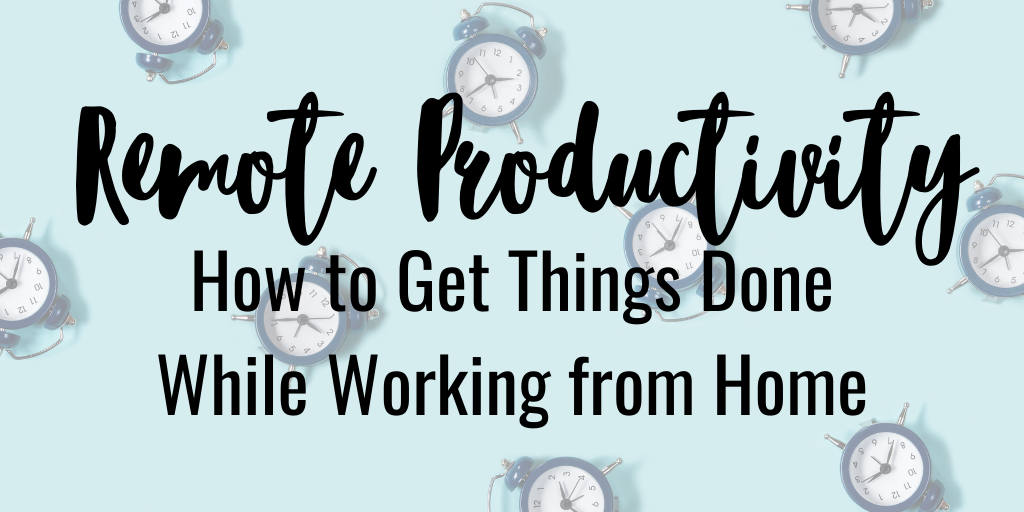

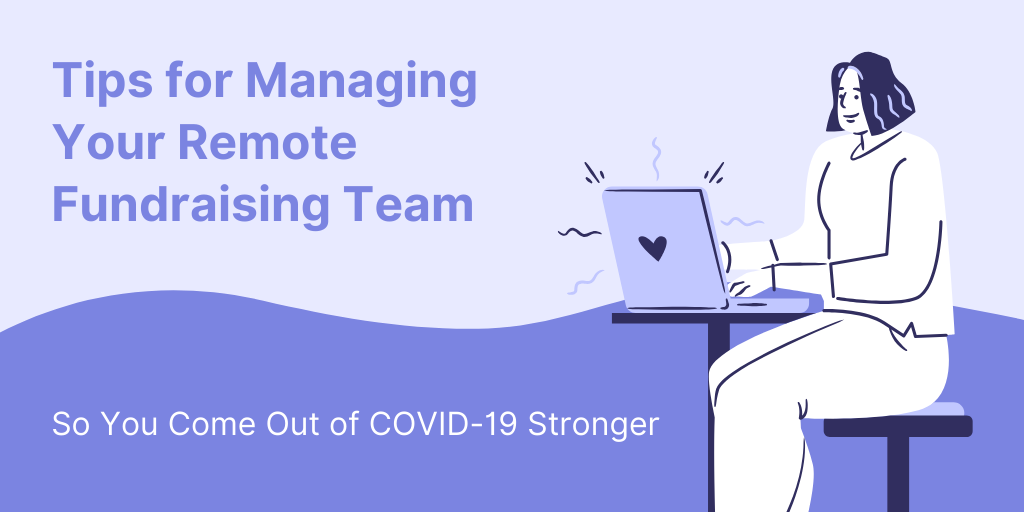
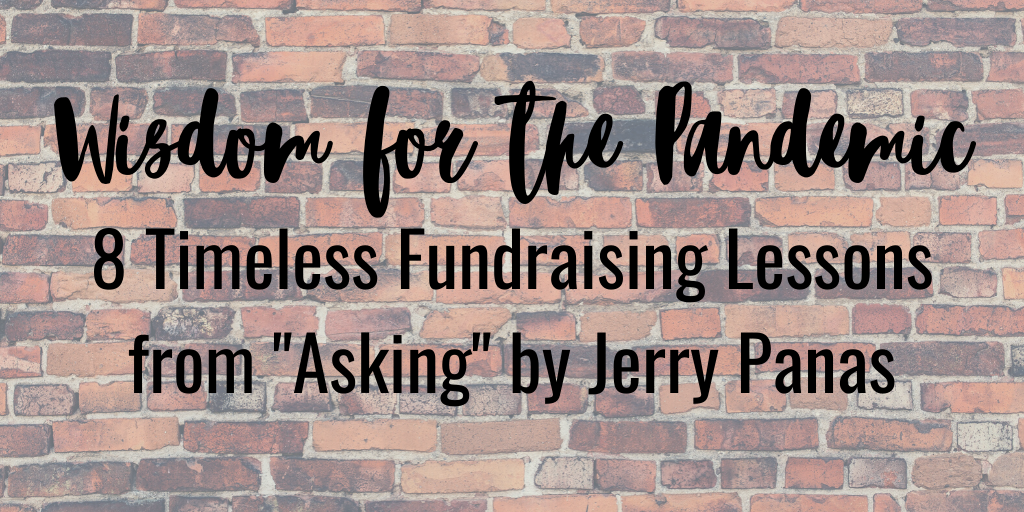

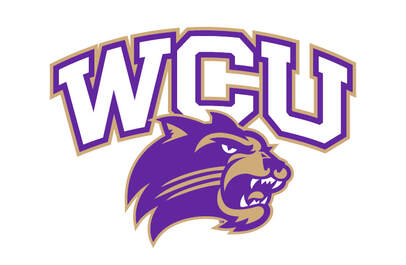
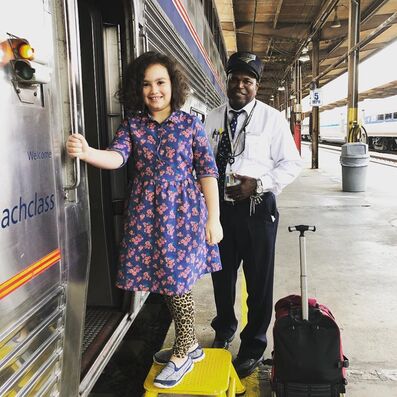
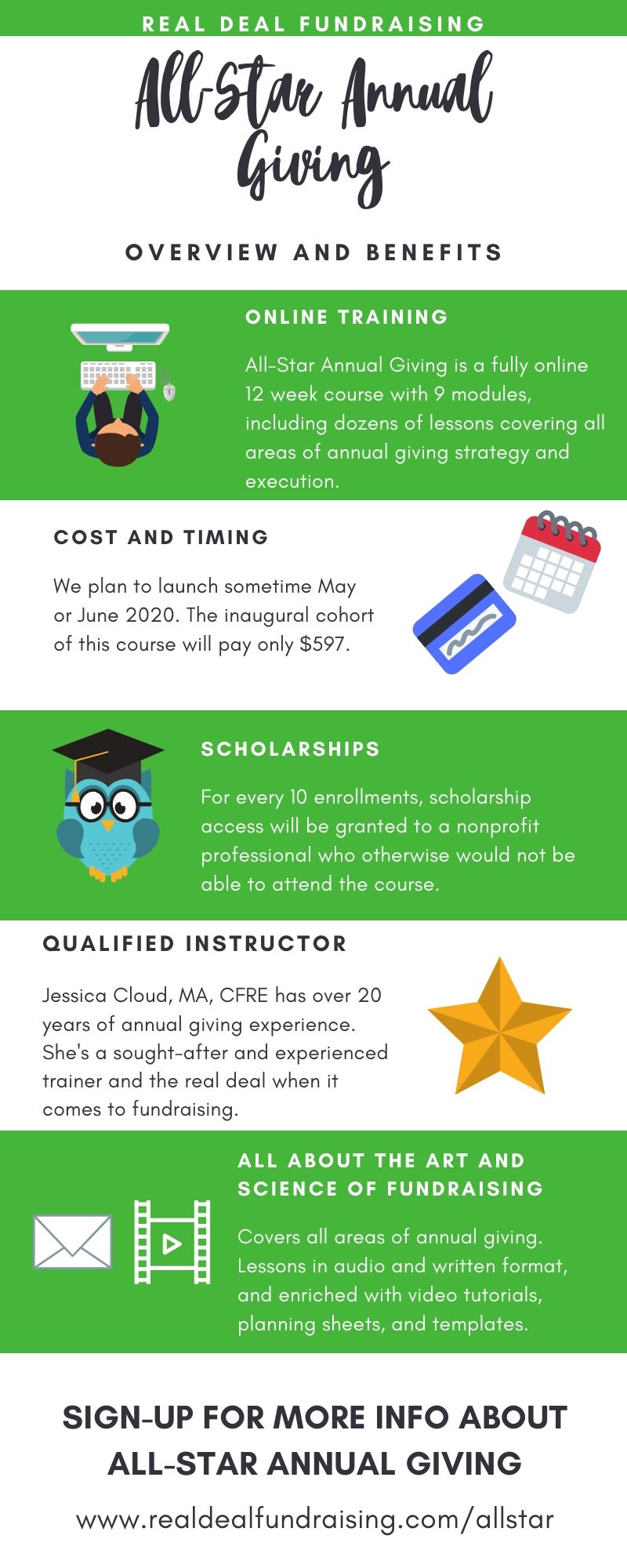
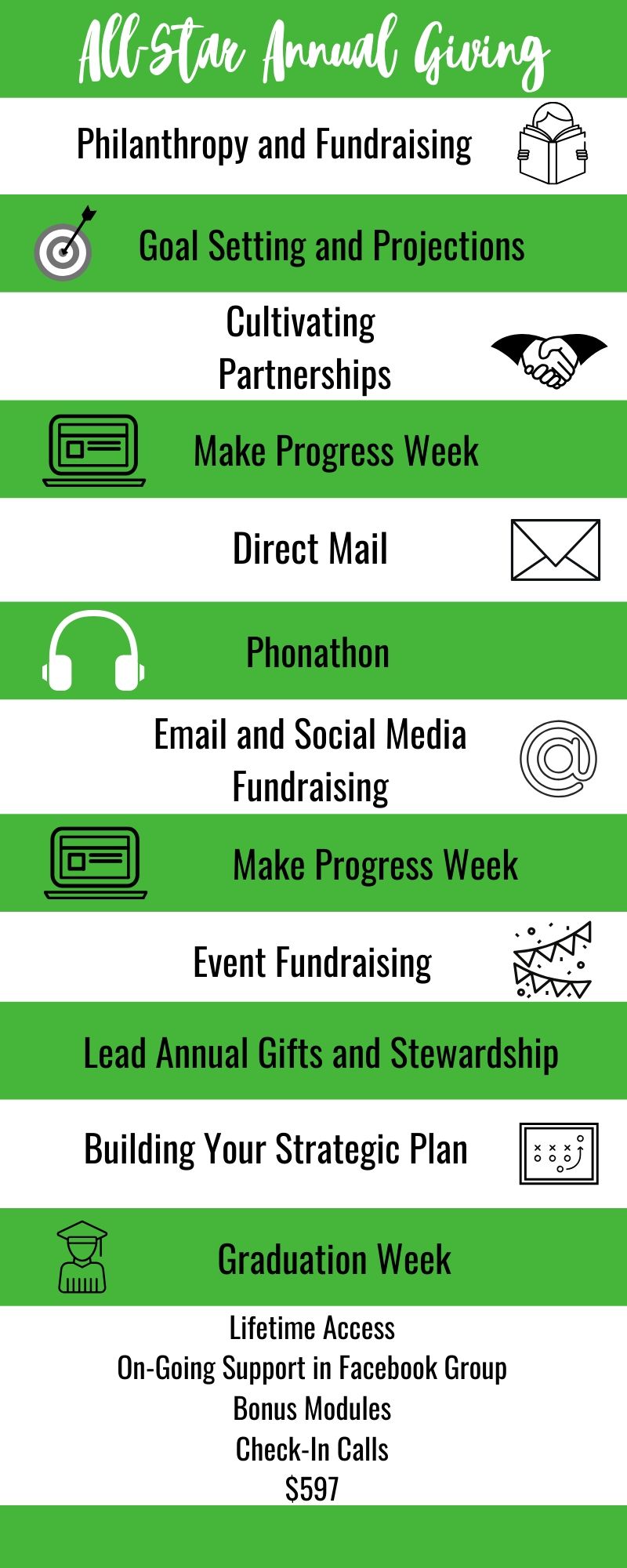
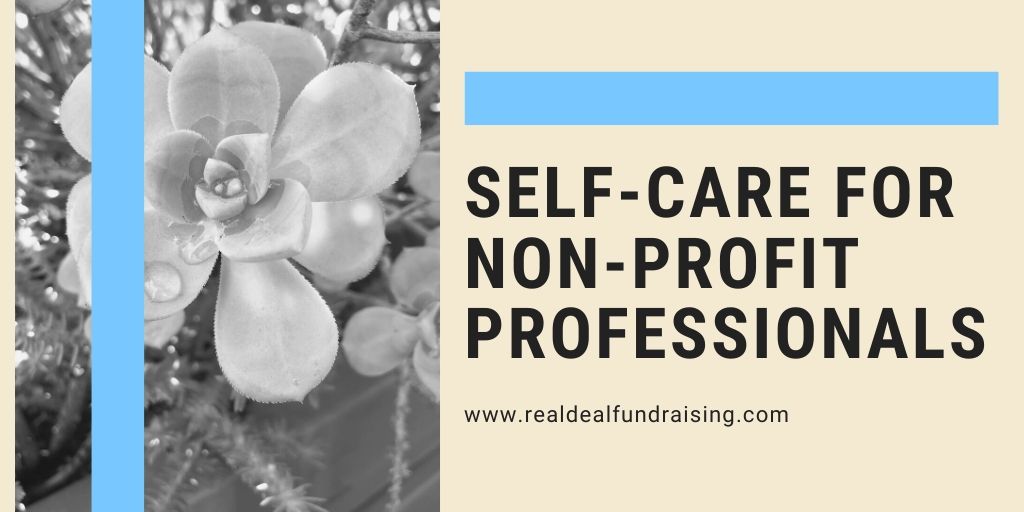
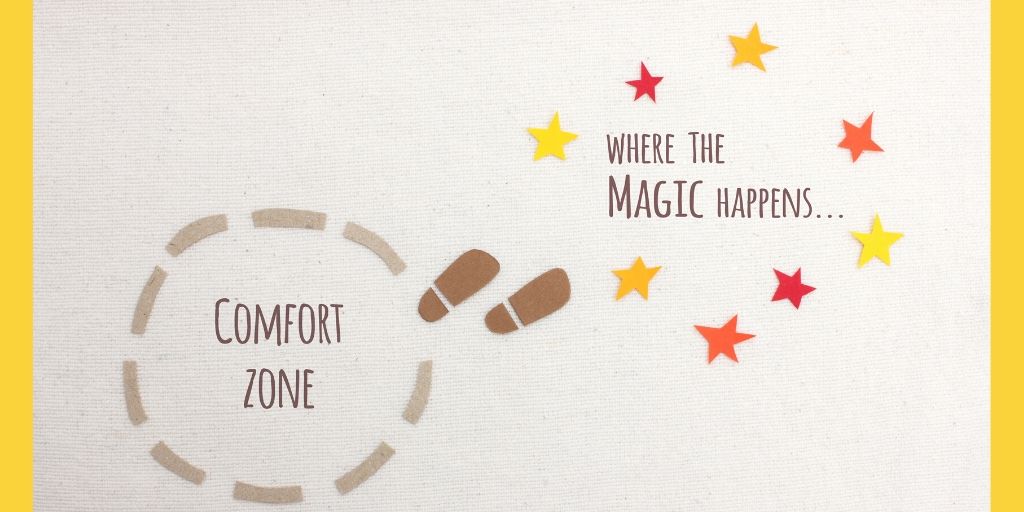
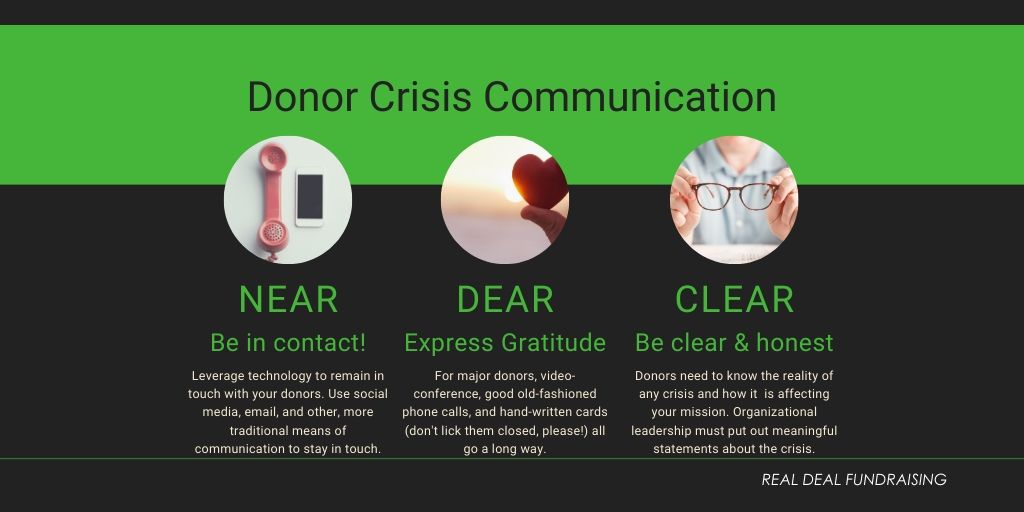
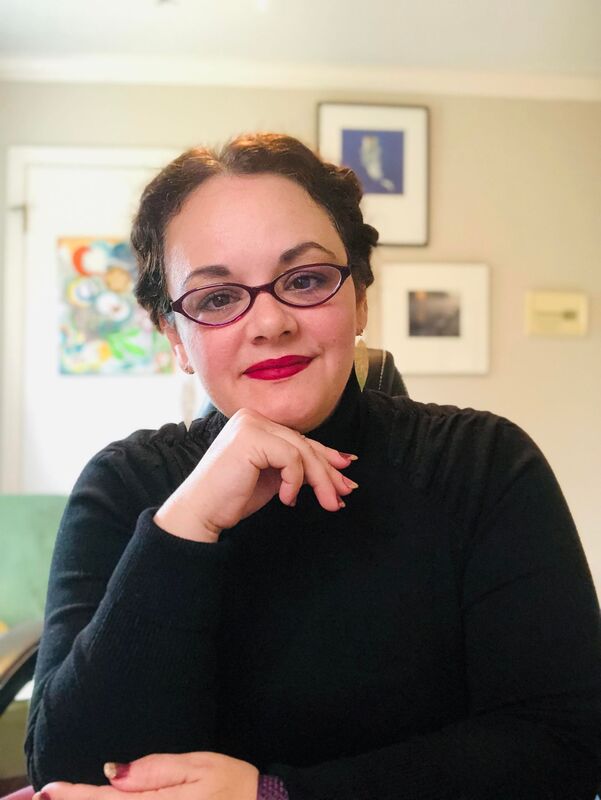
 RSS Feed
RSS Feed
